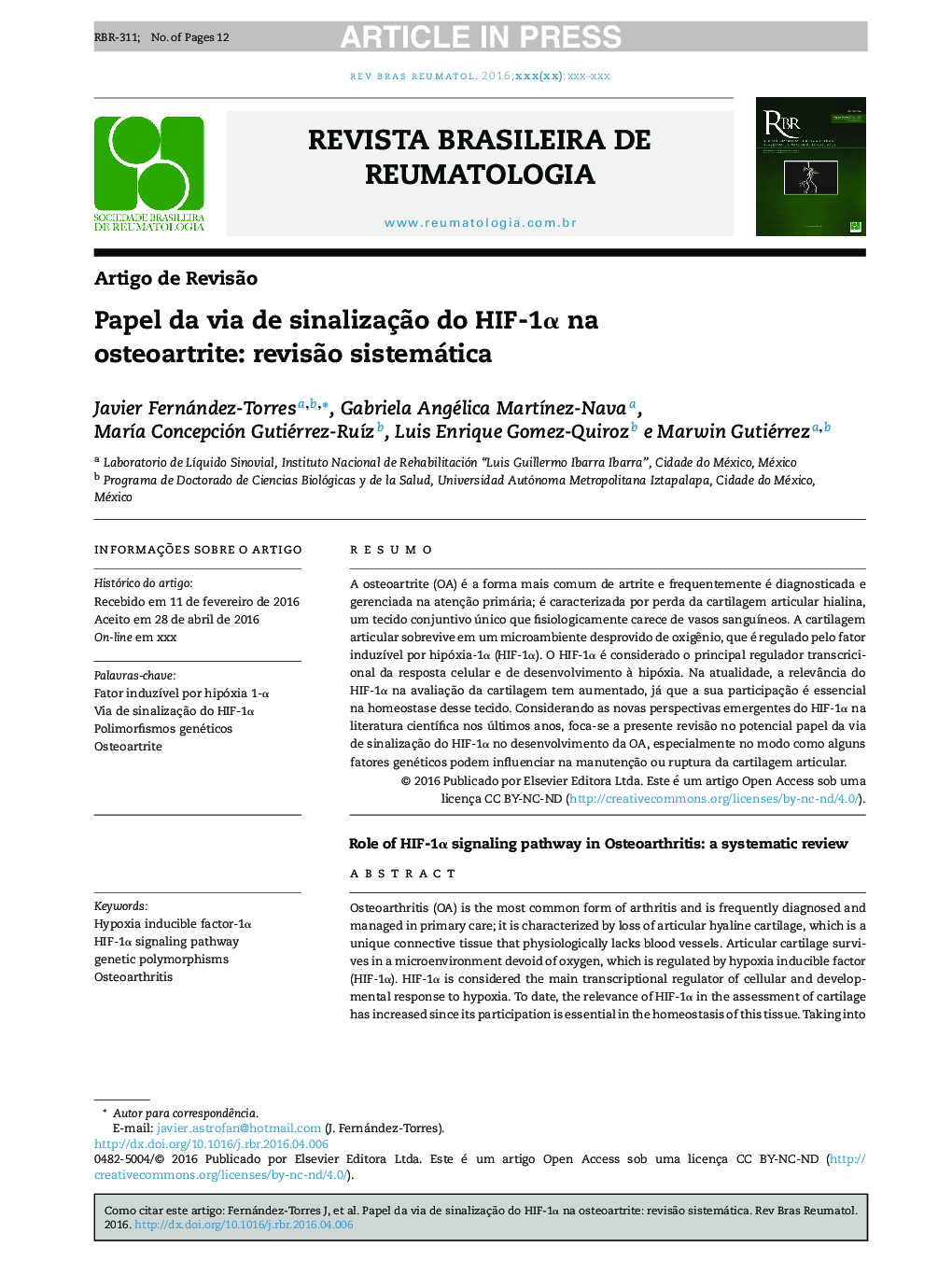| Article ID | Journal | Published Year | Pages | File Type |
|---|---|---|---|---|
| 8732843 | Revista Brasileira de Reumatologia | 2017 | 12 Pages |
Abstract
Osteoarthritis (OA) is the most common form of arthritis and is frequently diagnosed and managed in primary care; it is characterized by loss of articular hyaline cartilage, which is a unique connective tissue that physiologically lacks blood vessels. Articular cartilage survives in a microenvironment devoid of oxygen, which is regulated by hypoxia inducible factor (HIFâ1α). HIFâ1α is considered the main transcriptional regulator of cellular and developmental response to hypoxia. To date, the relevance of HIFâ1α in the assessment of cartilage has increased since its participation is essential in the homeostasis of this tissue. Taking into account the new emerging insights of HIFâ1α in the scientific literature in the last years, we focused the present review on the potential role of HIFâ1α signaling pathway in OA development, especially in how some genetic factors may influence the maintenance or breakdown of articular cartilage.
Related Topics
Health Sciences
Medicine and Dentistry
Geriatrics and Gerontology
Authors
Javier FernándezâTorres, Gabriela Angélica MartÃnezâNava, MarÃa Concepción GutiérrezâRuÃz, Luis Enrique GomezâQuiroz, Marwin Gutiérrez,
